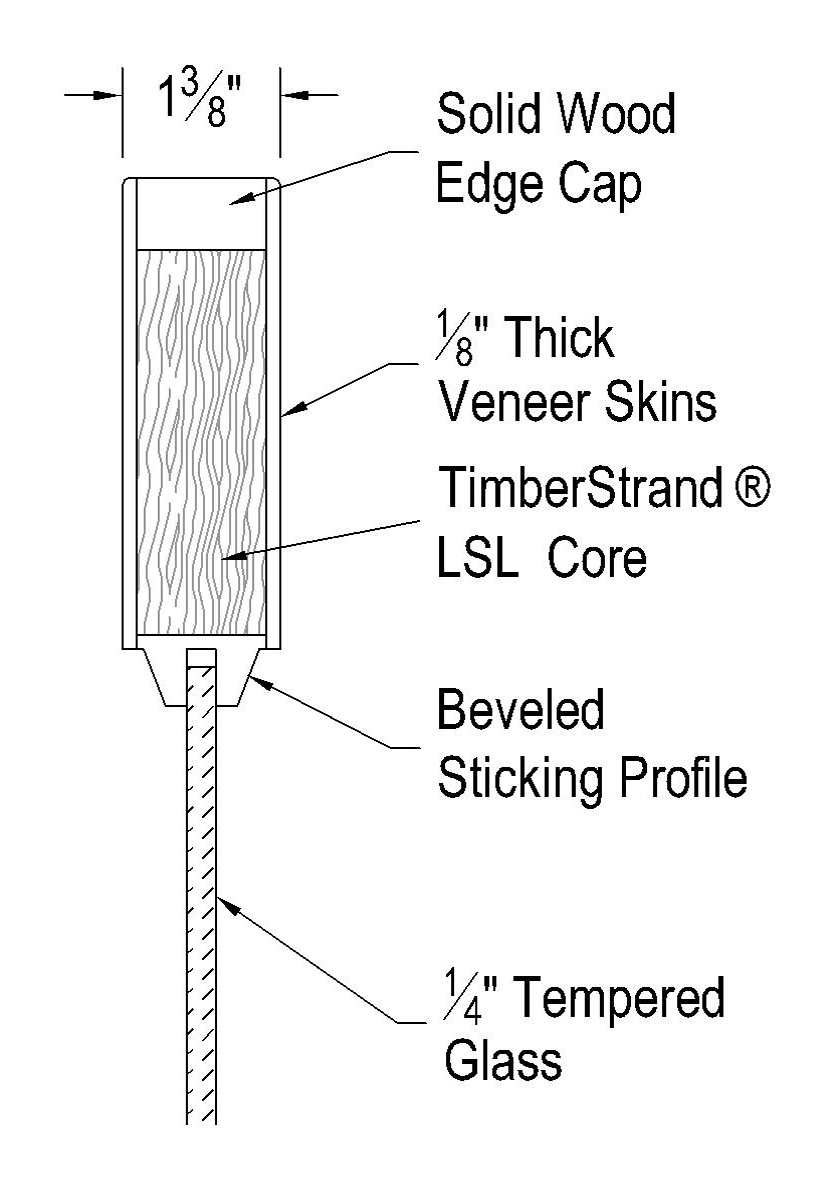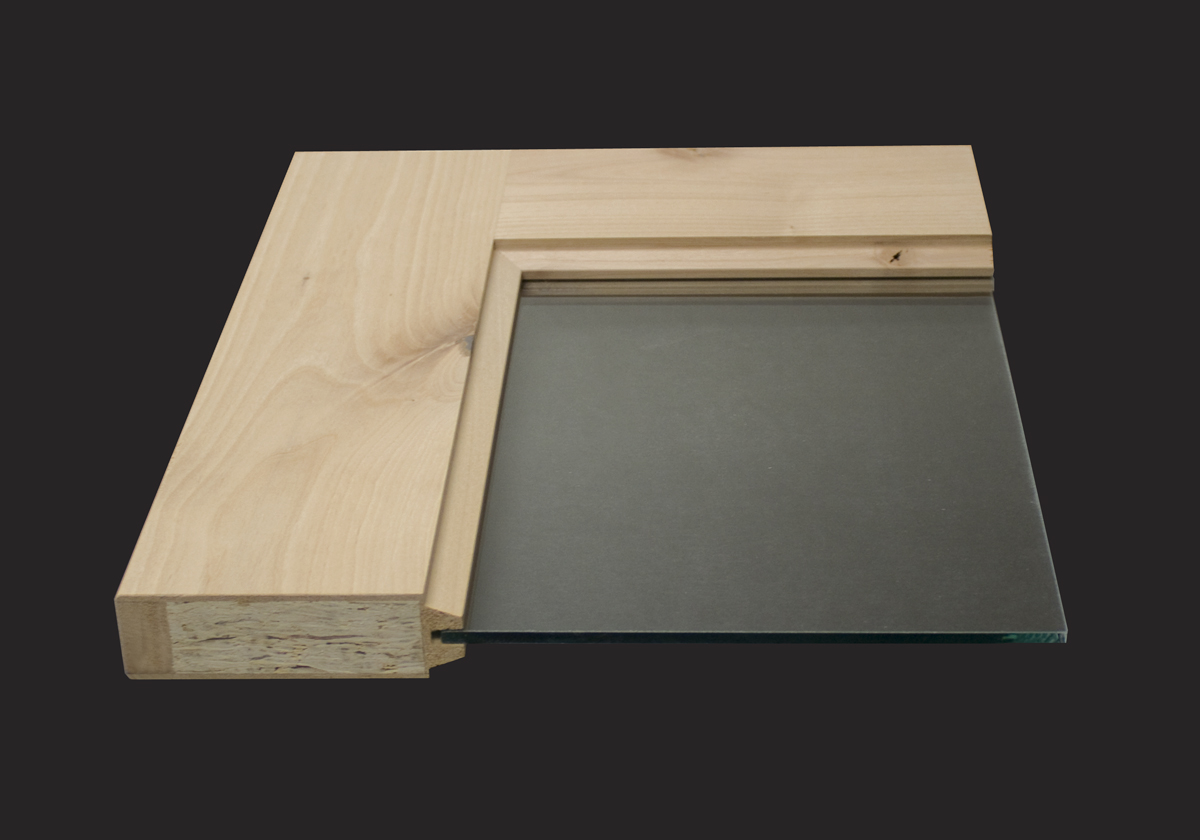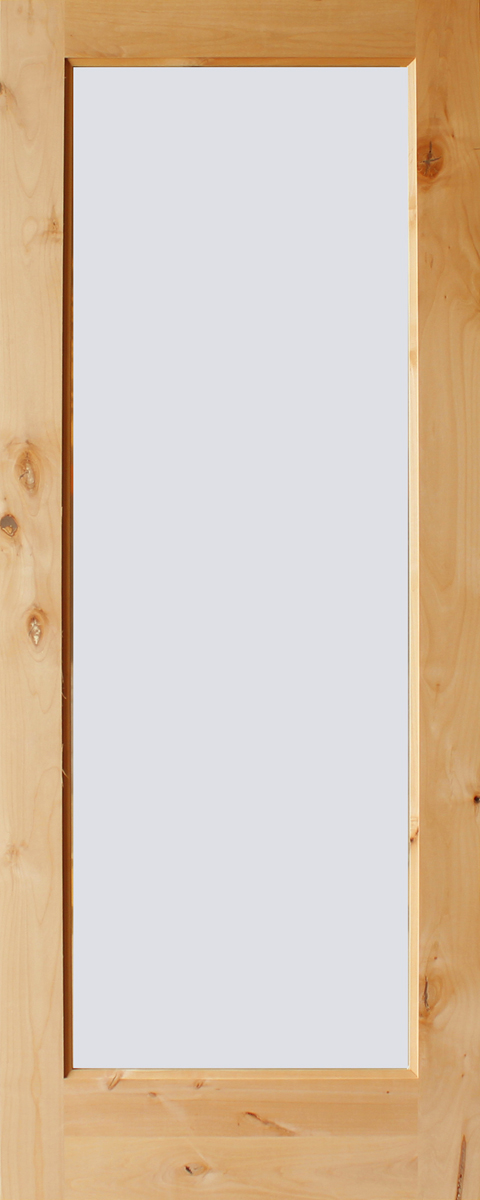1-Lite Glass
1-3/8″ Thick – Interior Door
1-LITE GLASS, Interior Door, 1-3/8″ Thick
Glass, or “lited,” doors include panes of glass that allow light to pass through the door.
This 1-3/8” thick 1-lite door is made in the U.S.A. at our northern Colorado factory. Our 1-3/8” thick doors are for Interior applications only—not for use as Exterior or “entry” doors. The 1-lite door is often purchased as a pair, for a “French” door application. Our Knotty Alder lumber is sourced from responsibly managed forests in the western U.S.
Key elements of this door include:
Warranty
An industry-leading Warranty is provided for this door, including one-year limited coverage on unfinished (raw) doors, and five-year limited coverage on factory pre-finished doors. Please note that this extended warranty applies only to the construction of the door, and not the factory pre-finish itself.
Engineered Stiles and Rails
Stiles and rails are the vertical and horizontal “frame” components, respectively, of the door. Our stiles and rails are engineered to resist bowing and warping. We use industry-leading 1/8” thick veneers, with superior quality TimberStrand® Laminated Strand Lumber (LSL) core material.
Glass
This door is manufactured with clear, 1/4” thick, single glaze (meaning single pane) glass. The glass is tempered for both safety and building code compliance.
Bore and Dowel Construction
Our doors are assembled with bore and dowel construction. We use industry-leading 1/2” diameter dowels. Stiles and rails are bored, glued and then doweled for optimum strength and stability.
Sticking Profile
This door features a beveled sticking profile as shown below. “Sticking” is the decorative trim wood placed between the stiles and rails and the glass of the door.



